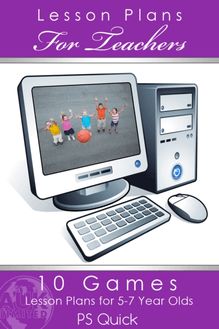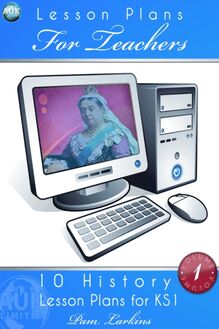-
 Univers
Univers
-
 Ebooks
Ebooks
-
 Livres audio
Livres audio
-
 Presse
Presse
-
 Podcasts
Podcasts
-
 BD
BD
-
 Documents
Documents
-
- Cours
- Révisions
- Ressources pédagogiques
- Sciences de l’éducation
- Manuels scolaires
- Langues
- Travaux de classe
- Annales de BEP
- Etudes supérieures
- Maternelle et primaire
- Fiches de lecture
- Orientation scolaire
- Méthodologie
- Corrigés de devoir
- Annales d’examens et concours
- Annales du bac
- Annales du brevet
- Rapports de stage
La lecture à portée de main
Vous pourrez modifier la taille du texte de cet ouvrage
Découvre YouScribe en t'inscrivant gratuitement
Je m'inscrisDécouvre YouScribe en t'inscrivant gratuitement
Je m'inscrisEn savoir plus
Vous pourrez modifier la taille du texte de cet ouvrage
En savoir plus

Description
Sujets
Informations
| Publié par | Andrews UK |
| Date de parution | 12 juin 2014 |
| Nombre de lectures | 0 |
| EAN13 | 9781783338030 |
| Langue | English |
Informations légales : prix de location à la page 0,0150€. Cette information est donnée uniquement à titre indicatif conformément à la législation en vigueur.
Extrait
Title Page
10 GAMES LESSON PLANS FOR 5-7 YEAR OLDS
P S Quick
Publisher Information
Published in 2014 by
Andrews UK Limited
www.andrewsuk.com
The right of P S Quick to be identified as the Author of this Work has been asserted in accordance with the Copyright, Designs and Patents Act 1998
Copyright © 2014 P S Quick
All rights reserved. No part of this publication may be reproduced, stored in a retrieval system, or transmitted, in any form or by any means without the prior written permission of the publisher, nor be otherwise circulated in any form of binding or cover other than that in which it is published and without a similar condition being imposed on the subsequent purchaser. Any person who does so may be liable to criminal prosecution and civil claims for damages.
Introduction
These 10 Games Lessons are designed to motivate children to listen attentively, develop positive attitudes and understand rules. Children will develop the skills of travelling, including chasing, fleeing and dodging; interact with others and use small apparatus to develop the skills required for more formal team games and sport when they are older.
Each lesson includes lesson objectives, a list of resources, instructions for games, a warm-up activity, and an introductory activity. The skill building part of the lesson enables them to experiment and build upon their skills. There is a cool-down activity as well as assessment cues. There are also suggestions for extension activities and where appropriate ICT opportunities which include web links.
Lesson 1
Changing Pace and Direction
Learning Objectives and Outcomes Children will recognise and describe how their bodies respond to exercise. They will listen carefully and respond to instructions, changing pace and direction with control. They will use small apparatus and interact with others.
Equipment A quoit and band for every child. A tambour or drum.
Instructions for Games
Traffic Lights - On the call of ‘red’ children must stand motionless. On ‘amber’ they walk while on ‘green’ they run. The actions could be varied on amber or green at the beginning of a new game. For example hop and jump could be used for ‘amber’ and ‘red’ instead of walk and run.
Peacocks - Each child has a band tucked in the back of their shorts to represent a feather. Children run round for thirty seconds trying to collect other’s feathers. Even if they lose their own feather they can still try to collect other peacock’s feathers. The winner is the person who has collected the most feathers at the end of the allotted time.
Warm-up
Teach children how to find a space by stretching their arms, turning a complete circle and then sitting down. Discuss how their bodies feel. Are they hot, warm or cold? Get them to feel their heart. What speed is it beating? Discuss the importance of a warm-up activity to get the body ready for exercise.
Explain how to play ‘Traffic Lights’ with the colours used to run, walk and freeze. Play this for a few minutes, encouraging children to make good use of the space. Now change the actions to hop and jump when ‘amber’ and ‘green’ are called. Ask the children how they are feeling once they are sitting down at the end of this activity.
Introductory Activity
Ask the children to name three different parts of the body on which they could move. Tell them today they will only use their feet but you want them to find as many different ways of moving in this way as they can. Encourage them to use the space safely, turning and moving away if anyone else comes too close.
Choose a few children with interesting movements and ask the others to stop and watch them. Get them to describe the movements being made then challenge the children to copy these movements. Pick out running as a movement then challenge the class to run too. Can they run in different ways using large strides, small steps, on tiptoes or with knees high in the air? Instruct them to change direction such as ‘move sideways’ and also direct them to move in a straight line or in a curved pathway. Can they run on the spot?
Skill Building
Explain that in some games we might need to run to chase but we may also need to flee and might need to dodge so that we do not get caught. To dodge we need to step quickly to the side and change direction. Explain the rules for the game ‘Peacocks’ then play for one minute. Who collected the most feathers? Ask children to replace their feathers and play the game a few more times.
Discuss the fact that some games also need us to carry small equipment such as a ball. Ask children to take a quoit and find as many ways of carrying it as they can. Give them a few minutes to do this, questioning and praising while they perform their actions. Ask some children to share their ways of moving with the quoit such as carrying in their hands, on their heads, between their legs, on their shoulders etc. What was the hardest way to carry the quoit, which was the easiest? What would be the best way if they were playing a game in which they had to run?
Cool-down
Bring the children back together and get them to sit in a circle with a little space between each child. Discuss how their bodies are feeling now after exercise. Explain how it is also important to give our bodies time to cool down so that they can return to normal and let the muscles relax. They are going to play a game that does this.
Ask children to stand and stretch their arms to the side, then above their heads and down to the ground. Repeat this with their legs. Now ask children to sit once again. Explain the activity and remind children to keep their eyes on the quoit at all times. Children pass a quoit around the circle as the teacher beats upon a drum or tambour. On the command of ‘change direction’ the quoit is passed the other way.
At the end of the lesson ask children again how their body has changed. Are they as hot, is their heart beating slowly or fast now?
Assessment Do the children understand how their body changes with exercise? Do they listen carefully and carry out instructions while using apparatus? Do they work co-operatively?
Extension Activities
Introduce different movements for the ‘Traffic Light’ warm up. In the cool-down activity more than one quoit could be passed around the circle at the same time.
ICT Opportunities
Children could think of playground games they play where they have to flee and dodge. They could research how quoits have been used in games over the years.
http://www.youtube.com/watch?v=vAlCcHIvgQ8 shows quoits being used as a target game, throwing them into a mud pit
http://vimeo.com/38846346 shows quoits being used as a target game in which hoops are thrown over pegs on a cross shape.
http://www.youtube.com/watch?v=EVi1EmRH2u0 shows medieval quoit throwing.
Lesson 2
Travelling and Passing
Learning Objectives and Outcomes Children will travel in different ways, repeating skills and actions with increasing control. They will travel holding equipment and pass a beanbag without dropping it. They will work co-operatively as part of a team.
Equipment A beanbag and hoop for every child .
Instructions for Games
Traffic Lights - On the call of ‘red’ children must stand motionless. On ‘amber’ they walk while on ‘green’ they run. The actions could be varied on amber or green at the beginning of a new game. For example hop and jump could be used for ‘amber’ and ‘red’ instead of walk and run.
Beanbag Circle - Divide children into teams of eight to twelve. Each child stands within a hoop which forms part of a large circle - not too close together.
The team has one beanbag held by the person in the first hoop. The aim is to throw the beanbag so that it is caught by the person in the next hoop.
-
 Univers
Univers
-
 Ebooks
Ebooks
-
 Livres audio
Livres audio
-
 Presse
Presse
-
 Podcasts
Podcasts
-
 BD
BD
-
 Documents
Documents
-
Jeunesse
-
Littérature
-
Ressources professionnelles
-
Santé et bien-être
-
Savoirs
-
Education
-
Loisirs et hobbies
-
Art, musique et cinéma
-
Actualité et débat de société
-
Jeunesse
-
Littérature
-
Ressources professionnelles
-
Santé et bien-être
-
Savoirs
-
Education
-
Loisirs et hobbies
-
Art, musique et cinéma
-
Actualité et débat de société
-
Actualités
-
Lifestyle
-
Presse jeunesse
-
Presse professionnelle
-
Pratique
-
Presse sportive
-
Presse internationale
-
Culture & Médias
-
Action et Aventures
-
Science-fiction et Fantasy
-
Société
-
Jeunesse
-
Littérature
-
Ressources professionnelles
-
Santé et bien-être
-
Savoirs
-
Education
-
Loisirs et hobbies
-
Art, musique et cinéma
-
Actualité et débat de société
- Cours
- Révisions
- Ressources pédagogiques
- Sciences de l’éducation
- Manuels scolaires
- Langues
- Travaux de classe
- Annales de BEP
- Etudes supérieures
- Maternelle et primaire
- Fiches de lecture
- Orientation scolaire
- Méthodologie
- Corrigés de devoir
- Annales d’examens et concours
- Annales du bac
- Annales du brevet
- Rapports de stage











